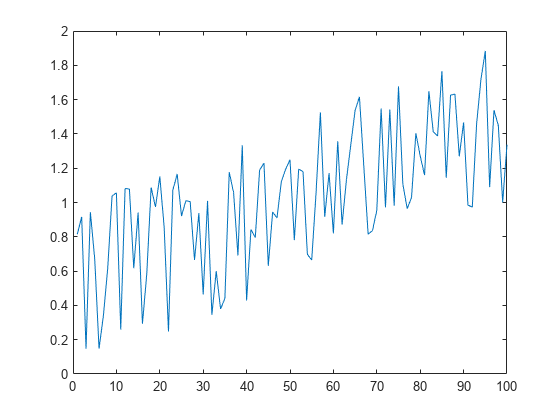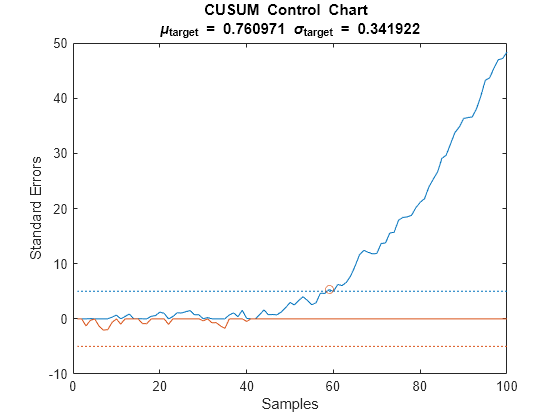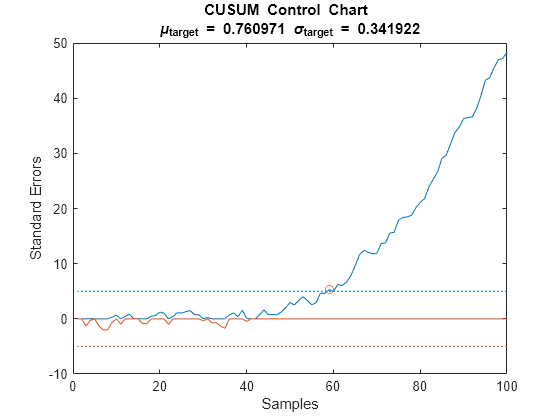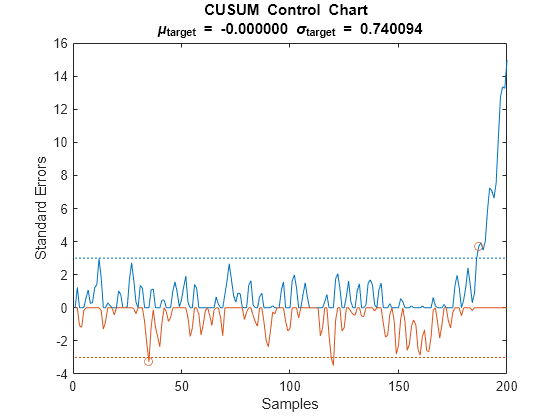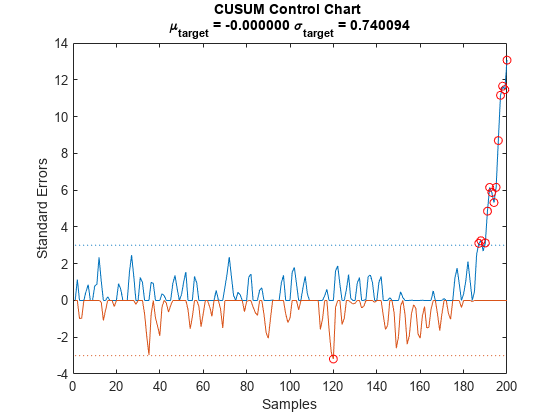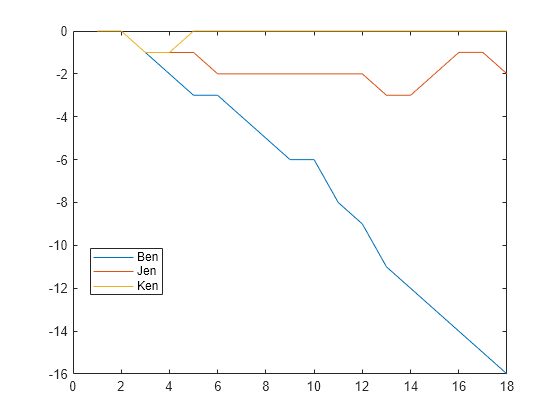cusum
Detect small changes in mean using cumulative sum
Syntax
Description
[
returns the first index of the upper and lower cumulative sums of
iupper,ilower] = cusum(x)x that have drifted beyond five standard deviations
above and below a target mean, respectively. The minimum detectable mean shift
is one standard deviation. The function estimates the target mean and standard
deviations from the first 25 samples of x.
[ returns
all the indices at which the upper and lower cumulative sums exceed
the control limit.iupper,ilower] = cusum(___,'all')
[ also returns the upper and lower
cumulative sums.iupper,ilower,uppersum,lowersum]
= cusum(___)
cusum(___) with no output arguments
plots the upper and lower cumulative sums normalized to one standard
deviation above and below the target mean.
Examples
Input Arguments
Output Arguments
More About
Extended Capabilities
Version History
Introduced in R2016a
